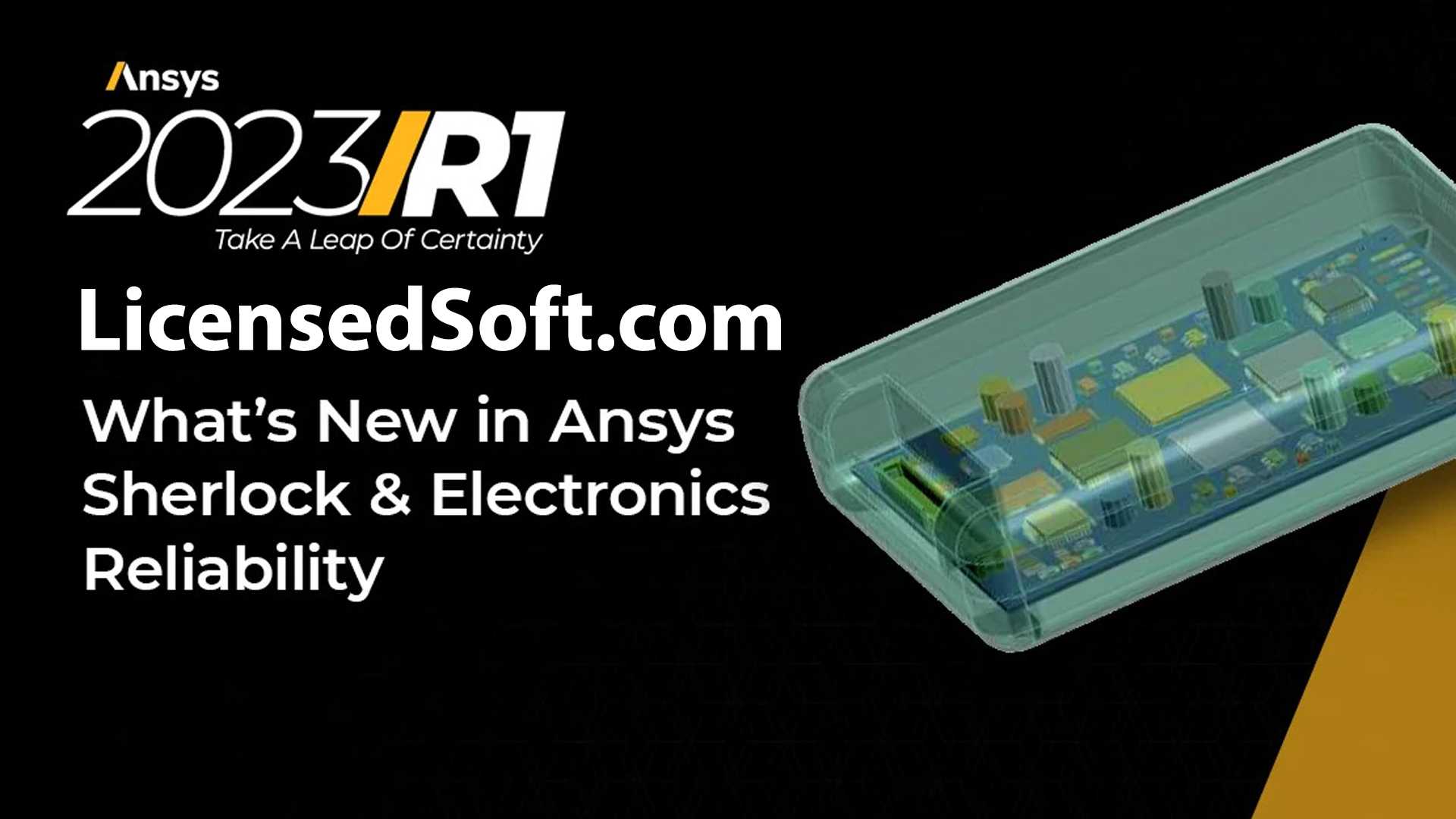ANSYS Electronics Suite 2023 version is a leading suite. ANSYS electromagnetic field simulation helps you design innovative electrical and electronics suite products faster and more economically. In today’s world of high-performance electronics suite and advanced electrified systems, the impact of electromagnetic fields on circuits and systems cannot be ignored. Our industry-leading electromagnetic, circuit, system, and multiphysics simulation software fully automates the design process so you can better understand how your product will behave. Instead of wasting time making and testing costly prototypes, you can quickly optimize your designs through simulation. Whether it’s a computer chip, a circuit board, a cell phone, an electronics suite component in a car, or an entire communication system, ANSYS software can help you design better products.
The portfolio enables ANSYS customers to transition from system, circuit and 2D extraction to 3D FEM and advanced multiphysics based on their simulation needs. Friends who need this tool are welcome to download and use it.
ANSYS Electrnoics Suite 2023 New Features
1. The latest 3D geometry kernel
Electron Desktop now uses the industry standard Parasolid geometry kernel. Details about this migration can be accessed from the Welcome dialog or the Help menu. You can also get Autodesk Autocad Electrical 2024 by LicensedSoft.
2. Universal electronics suite desktop
- Ability to export images in non-graphics mode
- Multi-level distribution in large-scale distributed solutions
- Batch options for selecting the Intel MPI version
- Property script API enhancement
- Improved performance of large mesh refinement
3. HFSS Company
- Support for modal ports and components in terminal designs
- Improve the workflow of layout components
- Improved HPC performance of the distributed mesh fusion solver
- Iterative solver option for mesh fusion
- Improve domain solver performance for large arrays
- Option to set phase center at port position
- AMD math library with direct matrix solver
- Improved TDR calculation
- Parallel components for 3D component arrays (Beta)
- Nonlinear Drude model of plasma density in implicit transient (Beta)
- SBR+ enhancement:
- Custom array
- Support PTD/UTD in advanced Doppler processing
- File-based near-field
- Near-field performance improvement
4. HFSS 3D layout
- Etching workflow and robustness improvements
- Arbitrary back drilling depth
- Layout and ECAD usability and performance enhancements
- AMD math library with direct matrix solver
- Iterative solver option for mesh fusion
- Improved TDR calculation
- l Solution management improvement
- IC layout mode (Beta)
- Rigid-soft multi-zone workflow (Beta version)
- Support wave port in broadband frequency sweep (Beta)
5. SIwave
- HFSS area cropping and configuration enhancement
- Improved robustness of CPA and PSI emulation modes
- Option to explicitly specify trace cross-section orientation
- Workflow and precision improvements for the ls parameter component
- Signal Net Analyzer report export enhancements
- DCIR on-site post-processing enhancement
- Validation check performance improvement
- CPA package netlist remapping to fit any chip
- CPA packet netlist simplification and synthesis
- Ability to specify multiple ground grids for a VRM during a CPA simulation
6. Thermal design
- Slider and HDM engagement enhancement
- Graphical monitoring of batch solutions
- Derived heat transfer coefficient in CTM v2 units
- Output temperature data from multiple PCBs to Sherlock
- ECXML export
- Support height effect
- Choice of 2D profile interpolation method
- New tool kit for snaps and radiators
- New Getting Started Guide: Heat Sink, RF Amplifier, Fan Position Optimization and Cold Plate Model
- ROM Delphi supports BGA (Beta version)
- Supports direct postprocessing of hybrid meshes (Beta
7. Maxwell
- Magnetostatic winding
- Force density calculation improvement
- Enhanced workflow for co-simulation with Motion
- Use solid conductors to support the parallel branches in the winding
- Semi-axis symmetry of object-based harmonic forces in transient
- Improved hp distribution efficiency for complex geometries in eddy current and static magnetic fields
- ROM-Based Efficiency Maps for Induction Motors in Motor Kit
- Motor toolkit workflow improvement
- Thin layer boundaries for 3D DC conduction
- TDM supports different time steps between source and target
- Option to use Lorentz force calculations in 3D transient
- New design setting to skip mesh quality check
- Two-dimensional transient frequency band mapping angle grid (Beta)
8. Motorized
- Thermal contact
- The reference temperature of the object in the structure
9. Q3D Extractor
- Performance improvements for E and H fields
- Infinite ground plane of CG
- Mandatory and passive checks for the stability of RLGC SPICE exports
- Transition Region Solver for AC-RL (Beta)
- CG distributed memory solver (Beta version)
10. Circle
General enhancements:
- Adaptive time stepping for nonlinear simulations
- Tx/Rx support for IBIS-AMI models
- Virtual EMI test receiver assembly (Beta)
- Enhanced Data Passivity Enforcement for State Space Fitting (Beta)
- Automatic adjustment of HFSS 3D layout ports in NuHertz (Beta)
SPISim:
- Ability to directly enable ERL calculations
- Workflow improvement for SERDES channel compliance
- Ability to specify Tx IBIS model and use conversion rate in COM
11. launch, launch
- Results and post-processing API
- Enhanced workflow usability
12. Twin builders
Reduced model:
- Linear static ROM, support a large number of parameters
- Linear Dynamic ROM
- ROM geometric deformation image generation
Modelica editor:
- Enhanced bijection (text to diagram) support
- Enhanced chart graphics
General enhancements:
- Support hierarchical parameters in the “Model Parameters” dialog box
- Model Exchange (ME) FMU support in Twin Deployer
- Support gradient fitting in device characteristics
- Carrier option in SVPWM component
- Automatic pin connection of large components
13. Granta
Granta material library:
- Ethylene glycol and propylene glycol records are updated with changes in thermal expansion, density vs. temperature, viscosity vs. temperature, and molecular data
- Fill in missing molecular mass values for all fluids
- Removed the temperature-dependent Young’s modulus of plastic PA12 (rigidity)
- Remove the Hc value of the soft magnet
- There are no other materials/records in the material library for this version, but some attribute values have been updated due to bug fixes
The Granta Producer material library:
- Added 8 new PCB laminates from two new producers: Arlon and Taconic
- They Added 9 new PCB laminates for existing manufacturers: Rogers, EMC, Shengyi and Ventec
- Added 1 new polymer elastomer material for existing producers: Laird
- The gap is filled with some mechanical and thermal properties.

Other New Functions:
1. Universal electronics suite desktop
New Electron Pro, Premium, Enterprise product licenses.
ANSYS Cloud workflow improvements, including new machine configurations.
Official release of Tau Flex meshing.
2. Wireless and RF
ANSYS high-frequency electromagnetic design software enables you to design, simulate, and verify the performance of antennas and RF and microwave components. Integrated microwave circuit and system modeling capabilities can be integrated directly into our EM solvers, providing a platform for full-system verification of next-generation RF and microwave designs.
3. PCB and electronics suite packaging
The ANSYS chip-package-system (CPS) design flow provides unparalleled simulation power and speed for power integrity, signal integrity, and EMI analysis of high-speed electronic devices. Automated thermal analysis and integrated structural analysis capabilities complete the industry’s most comprehensive chip-aware and system-aware simulation solution across the entire chip package board.
4. Mechatronics and Power Electronics
ANSYS electromechanical and power electronics simulation software is ideal for applications that require powerful integration of electric motors, sensors, and actuators with electronic controls. ANSYS software simulates the interaction between these components, and the design process combines thermal and mechanical analysis to evaluate cooling strategies and analyze key mechanical effects such as noise-vibration-harshness (NVH).
5. Electronic thermal management
ANSYS Electronics Suite Thermal Management solutions leverage advanced solver technology along with powerful automatic meshing capabilities to enable you to quickly perform heat transfer and fluid flow simulations for convective and forced air cooling strategies. Our solutions help you design cooling strategies to avoid excessive temperatures that degrade the performance of IC packages, printed circuit boards (PCBs), data centers, power electronics, and electric motors.
6. Application field
- Antenna
- Car radar
- Antenna installation performance
- radio frequency interference
- radio frequency and microwave
- signal integrity
- power integrity
- Low Frequency Electromagnetics
- electronics cooling
- electric motor
- EMI/Compatibility
- Power Electronics
- Radar Cross Section (RCS)
- RF design


